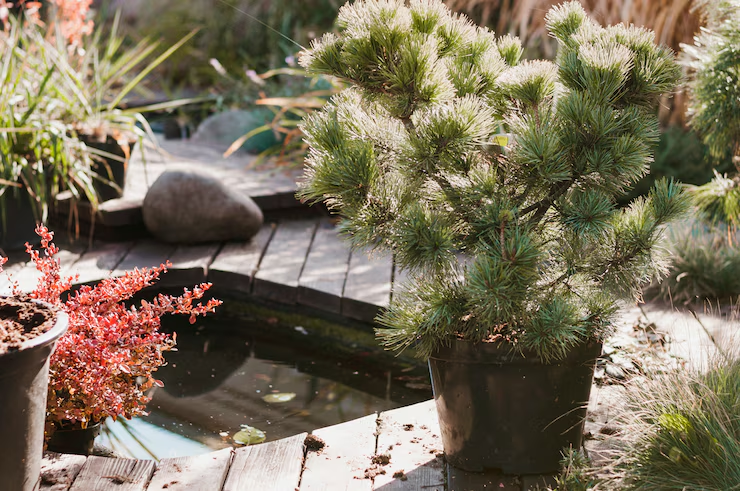Aquatic plants bring a unique beauty and serenity to apartment living. These plants can be placed in water-filled containers, offering a peaceful ambiance while improving the indoor environment. Some aquatic plants thrive in apartments and can even purify the air, reduce stress, and add a touch of nature to your space. In this article, we’ll explore the best aquatic plants for apartments, how to care for them, and some common problems and solutions.
1. Best Aquatic Plants for Apartments
Several aquatic plants are well-suited to indoor environments and can be easily maintained in an apartment setting. Here are a few of the most popular ones:
- Water Lilies (Nymphaea): Water lilies are elegant and easy to care for. They have large, floating leaves and beautiful flowers. These plants do best in large containers with ample space for their roots.
- Peace Lily (Spathiphyllum): While traditionally a houseplant, the Peace Lily can also grow well in water. It thrives in water and can purify the air around it, making it a great addition to any indoor space.
- Anubias: A popular aquatic plant in aquariums, Anubias is low-maintenance and can grow submerged or partially submerged in water. It requires low to moderate light and can be anchored to rocks or driftwood.
- Pothos (Epipremnum aureum): Known for its trailing vines, Pothos can be grown in water and is a great choice for hanging baskets or containers. It’s hardy and easy to care for.
- Hornwort (Ceratophyllum demersum): A floating plant, Hornwort is an excellent choice for aquariums or containers. It helps filter the water and provides shelter for aquatic creatures.
2. How to Care for Aquatic Plants in Apartments
Taking care of aquatic plants requires some attention to water quality, light, and temperature. Here’s a general guide to ensure your plants thrive:
- Water Quality: Use clean, non-chlorinated water. Tap water contains chlorine and chloramine, which can harm plants. Let the water sit for 24-48 hours before using it, or use a water conditioner designed to remove chlorine.
- Light: Most aquatic plants require bright, indirect light. Direct sunlight can cause algae growth, while too little light can slow plant growth. A location near a window with filtered light or a grow light is ideal.
- Temperature: Most aquatic plants prefer temperatures between 65-75°F (18-24°C). Keep the plants in a location where the temperature remains consistent, away from drafts or extreme heat sources.
- Water Level: Ensure the water level is stable. Fill your container to the top and maintain it to avoid the plant’s roots drying out. Change the water regularly (every 1-2 weeks) to keep it fresh and clean.
- Fertilization: Aquatic plants benefit from occasional fertilization. Use a liquid fertilizer designed for aquatic plants to provide essential nutrients. Apply sparingly, as too much fertilizer can lead to algae growth.
3. Common Problems and Solutions
While aquatic plants are relatively easy to care for, they can still encounter issues. Here are some common problems and their solutions:
- Algae Growth:
- Problem: Excessive sunlight and nutrients can cause algae to grow in the water, which can suffocate your plants.
- Solution: Reduce the amount of direct sunlight your plants receive and remove algae manually. Clean your containers and change the water regularly. You can also use algae-eating snails or fish if you’re growing plants in an aquarium.
- Yellowing Leaves:
- Problem: Yellowing leaves can be a sign of poor water quality, insufficient light, or nutrient deficiencies.
- Solution: Ensure your plants are receiving the right amount of light and replace the water regularly. If the plant is still growing poorly, consider adding a water-soluble fertilizer specifically for aquatic plants.
- Root Rot:
- Problem: Root rot occurs when the plant’s roots are exposed to stagnant, low-oxygen water or overwatering.
- Solution: Remove affected plants immediately, trim any rotting roots, and replace the water in the container. Ensure that the plant has proper drainage or oxygenated water to prevent further rot.
Aquatic plants offer an easy way to enhance your apartment’s décor while also bringing nature indoors. With the right care, these plants can thrive in water-filled containers, creating a tranquil and green space. Regular attention to water quality, light, temperature, and occasional fertilization will keep your plants healthy and beautiful. By addressing common issues such as algae growth or root rot promptly, you can enjoy the beauty and benefits of aquatic plants in your home.

